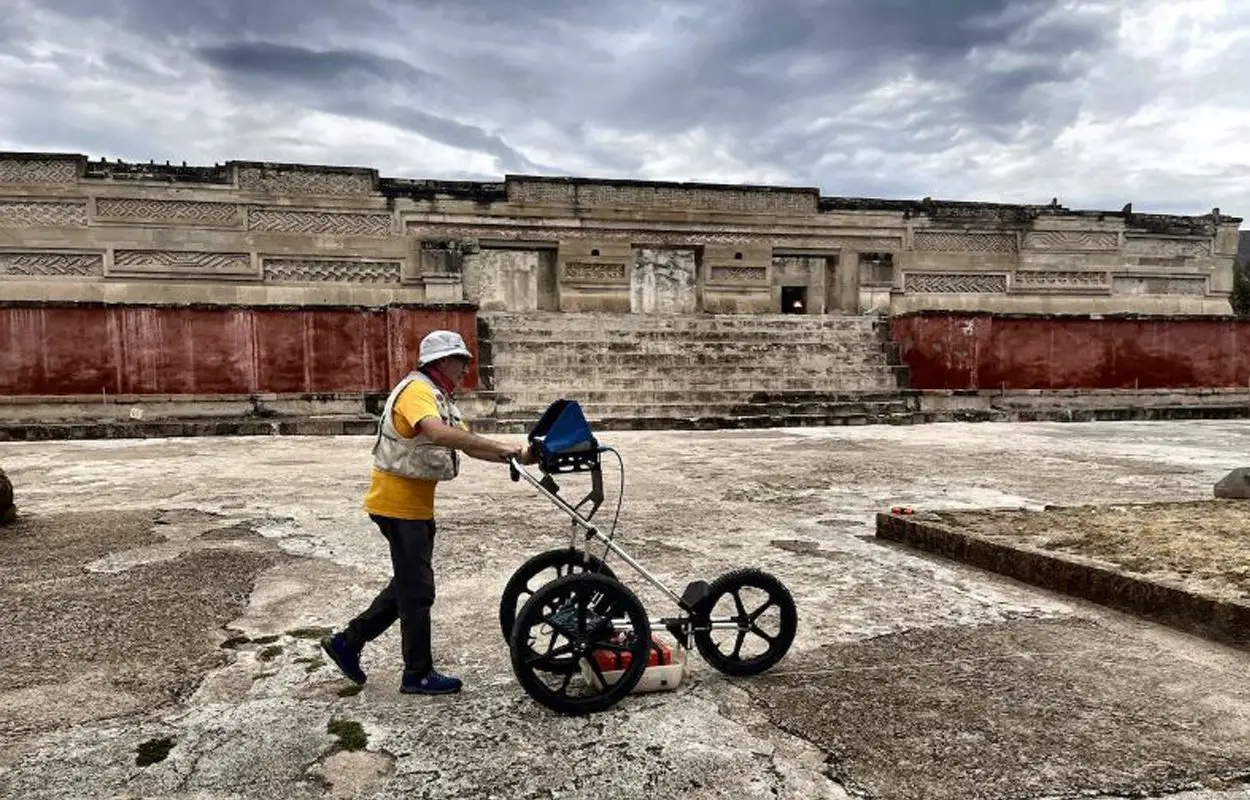A geophysical study led by the National Institute of Anthropology and History (INAH) has found possible evidence of tunnels beneath the church of San Pablo Apóstol at the Zapotec archaeological site of Mitla.
According to legend, the church was built on an entrance to an underground labyrinth and served as a gateway between the world of the living and the world of the dead, with the Nahuatl name Mictlán meaning the “place of the dead” or “underworld.”
Writing in 1674, a Dominican chronicler named Francisco Burgoa, described how a group of Spanish missionaries descended into a maze of tunnels beneath Mitla: “Such was the corruption and bad smell, the dampness of the floor, and a cold wind which extinguished the lights, that at the little distance they had already penetrated, they resolved to come out, and ordered this infernal gate to be thoroughly closed with masonry.”
Mitla was first inhabited by the Zapotec during the Classic Period (AD 100-650), emerging into a large religious centre in the present-day municipality of San Pablo Villa de Mitla, located in the state of Oaxaca, Mexico.
Mitla is unique among Mesoamerican sites because of its mix of Zapotec and Mixtec architectural styles, and elaborate mosaic fretwork and geometric designs that cover tombs, panels, friezes, and entire walls of the complex.
Archaeologists from INAH conducted non-invasive geophysical techniques using ground penetrating radar, electrical resistivity tomography, and environmental seismic noise interferometry tomograph, revealing evidence of anomalies in the subsoil beneath the church of San Pablo Apóstol.
According to the researchers, the results could indicate the existence of a system of tunnels at the rear of the church, as well as hollow areas below the sacristy and atrium of the church structure.
In a press announcement published by INAH: “It seems very likely that the most important Catholic church in Mitla was built on top of the main place of worship of the ancient Zapotec religion. However, these are indirect observations, which will require archaeological examination to materially confirm their validity and extent.”
Header Image Credit : Lyobaa Project







